by Peter Jenkins
My most natural starting point may be an account of what the secretary general of Pugwash, a German colleague, and I learned in Moscow on January 28 in meetings with Russia’s foreign minister and the appropriate deputy minister. Discussion at both meetings focused largely on U.S.-Russian nuclear arms control. Our hosts’ objective, not surprisingly, was to convince us that Russia had not breached the Intermediate Nuclear Forces (INF) Treaty and that, if the treaty collapsed as they expected, the fault would lie at the door of the United States.
The essence of their case was that the cruise missile which the United States believes to have been tested at ranges in excess of 2,000 kilometers has a maximum range of 480 kilometers, just below the INF threshold of 500 kilometers. This missile, known in Russia as the 9M729, is a variant, they said, of the 9M728, also known as the Iskander-M, which has a maximum range of 490 kilometers. The 729 is heavier than the 728, because of an improved on-board guidance system. But the fuel capacity is the same, so the maximum range is slightly shorter.
They were equally intent on spelling out the reasons they have for believing that the United States is in breach of the INF. They cited the Aegis Ashore launchers in Romania and, in the near future, Poland, which are capable of launching both ballistic interceptors and Tomahawk cruise missiles, heavy drones, and certain ballistic interceptors that have been in use in missile defense system tests.
They regretted that the United States had rejected a Russian proposal for reciprocal steps to resolve compliance concerns, for example reciprocal inspections of the 729 variant of the Iskander-M and of the Aegis Ashore launchers in Romania and Poland. Instead the United States was insisting that Russia destroy all 729s under U.S. supervision in addition to quarterly U.S. inspection visits to the 729 production plant.
U.S. rejection of the Russian reciprocal inspection proposal had not come as a surprise, they said, since during a visit to Moscow in October the National Security Advisor John Bolton had spoken of the INF’s demise as inevitable. Bolton had stressed that the U.S. government had decided to do away with the treaty and that he had come to inform, not to bargain or negotiate. It was not concern about Russian actions that had brought about the U.S. decision to kill off the treaty, he had said, but a desire to have a free hand to react to Chinese, North Korean, and Iranian missile threats in whatever way the United States judged best.
Lastly, before turning to the strategic dimension, the Russian officials underlined that, if the INF collapses, Russia would not be the first to deploy to the European theater (or in any other theater) any missiles banned by that treaty.
They then urged us to be in no doubt as to Russia’s wish to preserve New START, to extend it beyond February 2021, and to build on it through further reductions in strategic nuclear weapon systems and deployed warheads after 2026. This is official policy, they said. Past Russian voices to the contrary should be ignored. All Russian systems could be on the table.
At the same time, they wanted us to be aware of a Russian compliance concern. New START binds both parties to “irreversible convertibility” of weapon systems withdrawn from service to bring the number of systems remaining in service below agreed numerical ceilings. The Russian concern relates to 56 submarine ballistic missile tubes and 41 B52 bombers. In their view these systems have not been subjected to irreversible modifications and could quickly be brought back into service, making possible the delivery of an additional 1280 warheads.
They emphasized that they are anxious for a healthy strategic dialogue with U.S. counterparts but suspected that this wish wasn’t reciprocated. At U.S. request, they had made proposals for specific agenda items for a strategic dialogue meeting; these had been unanswered. Also without a response was a Russian proposal to repeat a past joint statement about the inadmissibility of nuclear war.
They feared that the demise of the INF would cast a long shadow over the 2020 Nuclear Non-Proliferation Treaty (NPT) Review Conference. Continuing U.S. objections to progress on the 1995 Middle East WMD-free-zone proposal and continuing U.S. non-ratification of the 1996 nuclear test ban treaty would be aggravating factors.
This account, of course, may not correspond to objective reality in all respects. For instance, the Americans believe that the 729 is a variant of the 2000-plus km Kalibr sea-launched cruise missile, not of the short-range 9M728 Iskander-M. But now I’d like to offer a personal assessment of the outlook for nuclear arms control and non-proliferation.
Looking Ahead
If John Bolton says that the demise of the INF is inevitable—and that part of what we heard on January 28 seems entirely credible—then it probably is inevitable, because he is well-placed to deliver on his prediction. But last week a retired U.S. ambassador to Moscow urged me not to abandon hope. He saw promise in the Russian proposal for reciprocal inspections of the 729 missile and Aegis Ashore launchers, and he urged that Europe press Washington—presumably both the administration and Congress, especially the Democrat majority in the House—to agree to reciprocal inspections.
The following day I read that NATO’s secretary general had told NBC News that, although NATO is planning for a world without the INF and a Europe with more Russian missiles, its first priority is to save the treaty.
If, nonetheless, the 2 August deadline passes with the treaty unsaved, what then?
I do not share the NATO secretary general’s apparent certainty (if this is what he had in mind) that Russia will start deploying ground-launched intermediate range missiles on its European flank. On the contrary, I am inclined to take at face value the assurance we received on January 28—which has been repeated publicly, for instance by President Vladimir Putin on February 20—that Russia will not be the first to deploy to the European theater missiles banned by the INF.
This suggests to me that Europe should make clear to Washington that it does not want the United States to be the first to deploy INF-banned missiles in Europe and wants the United States to consider the option of a NATO-Russian joint declaration on non-first deployment, as a confidence-building measure.
Also to build confidence NATO and Russia could exchange information about existing ground-launched non-strategic missile deployments in Europe, and individual missile capabilities, directly or via an impartial non-governmental institution.
In other words, Europe should strive to avert the destabilizing effect of reciprocal intermediate-range ground-launched deployments, the risk being great that such deployments would create temporary imbalances and might lead to circumstances in which Russian decision-makers, believing essential Russian command-and-control centers and/or strategic nuclear assets to be at risk from an intermediate-range NATO first strike, opted for a Russian intermediate or strategic first strike.
Of course, a pressing problem is that the 729 missile has been deployed west of the Urals, and NATO is sure that it is an intermediate-range missile. This can create pressure for a countervailing NATO intermediate deployment. But there is an obvious alternative: for the United States to render its European Aegis Ashore launchers irreversibly incapable of launching Tomahawks in return for permanent Russian withdrawal of all 729s from the European theater. Perhaps this trade-off has been the Russian goal all along.
The deployment of INF-banned systems would be all the more destabilizing if one or more of those systems were hypersonic. The U.S. Advanced Hypersonic Weapon (AHW), for instance, the U.S. hypersonic system most likely to become deployable in the next few years, is thought to have a maximum range of 6000 kilometers and to be capable of a speed in excess of Mach 8. This means that an AHW launched from East Anglia could reach Moscow 14-15 minutes later. Its deployment would probably prompt Russia to deploy the 1,000 kilometer Mach 9 hypersonic missile of which President Putin spoke on February 20. This is not the stuff that stable European security is made of!
Incidentally, I believe that Russian arms control experts look back on the deployment of intermediate nuclear-armed SS20 ballistic missiles to the European theater at the end of the 1970s as a mistake. That deployment led to U.S. counter-deployments of nuclear-armed ballistic and cruise missiles, and to a crisis in the autumn of 1983 when Moscow feared a NATO intermediate first strike to be imminent and came close to resolving to strike first.
At the Strategic Level
Those familiar with U.S. debates say that any hope of extending New START in early 2021 will evaporate if the INF is killed off. I don’t understand why that need be so. I prefer to focus on the assurances we received on January 28 that Russia sees an extension as desirable and in Russia’s interest. An extension would keep out of service those 56 submarine ballistic missile tubes and 41 B52s that Moscow believes could quickly be brought back into service if New START were to expire. And a strategic arms race would be very expensive. Moscow knows that from bitter experience.
In any case, Europe should do all it can to ensure that New START is extended, irrespective of whether the INF can be saved.
The implications of all this for the 2020 NPT Review Conference are not good. A large majority of NPT parties will see the demise of the INF as further evidence of Nuclear Weapon State (NWS) back-sliding in relation to what they view as a firm NWS commitment, via Article VI of the NPT, to do away with nuclear weapons. They are utterly fed up with the United States and its European allies trying to strengthen the non-proliferation provisions of the NPT while signalling through their decisions and actions that nuclear weapons are an essential source of U.S. and European security. It’s bad enough, in the eyes of most NPT parties, that all five NWS have embarked on the modernization of their nuclear forces and manifest no interest whatsoever in moving towards Global Zero. In addition, four of them have taken to attacking the 2018 Nuclear Ban Treaty, and two of them have yet to ratify the 1996 CTBT.
In a potential silver lining to all of this prospective frustration and anger, Europe has an additional argument against the deployment of missiles banned by the INF and in favor of extending New START. Whether such an argument will cut any ice in Washington under the present administration is moot, of course. U.S. officials can fairly argue that NPT non-nuclear weapon state parties have come to understand that it is in their interest to preserve the NPT, whether or not the NWS honor their part of the 1968 NPT bargain. Nonetheless, I hope Europe will exploit the approach of the 2020 Review Conference when making the case for New START extension, no INF-range ground-launched deployments in Europe, and a NATO-Russian no-first deployment declaration.
This article is based on a talk in London on February 23.

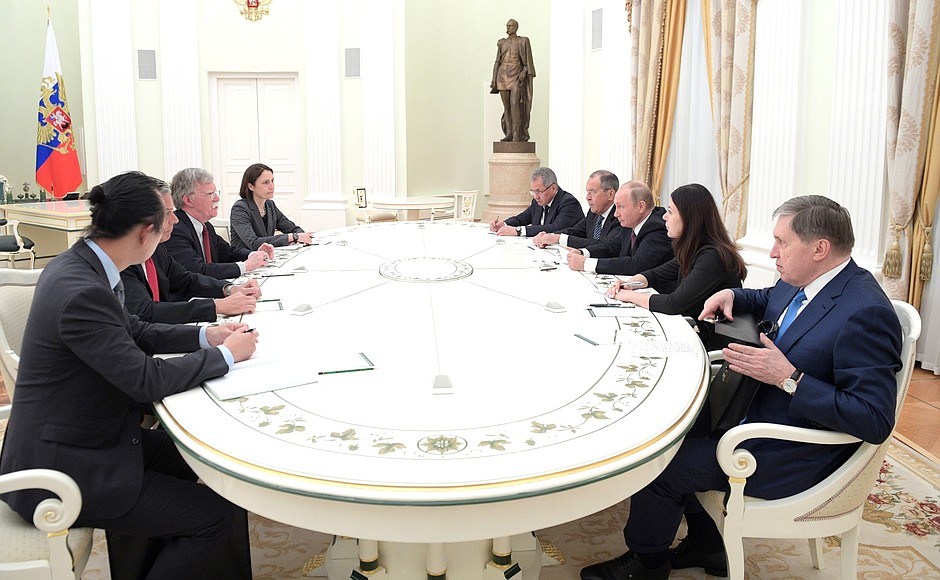
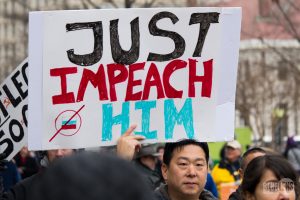
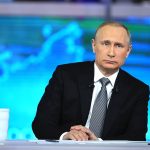
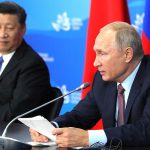
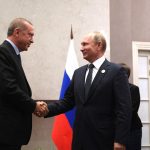
Amb. Jenkins, thank you for this analysis and recommendations!
Because some people profit from war, what’s why. Simple as that.
Great piece, Amb. Jenkins. With reference to the report on John Bolton’s October visit to Moscow, John Bolton is having the highpoint of his career and probably his life. One can imagine that those with his worldview toast him regularly. Interesting to put that in the context of Alfred McCoy’s Feb 28 TomDispatch piece on Destroying a World Order. While McCoy posits that 1) Washington’s world order is coming to an end and 2) the US is descending while China is ascending, Bolton and cohorts agree with 1) but not with 2). They view US military might as the fundamental element in maintaining Washington’s grip on the world. And as long as Bolton has a hold on the strings of power, that’s where the US is headed.